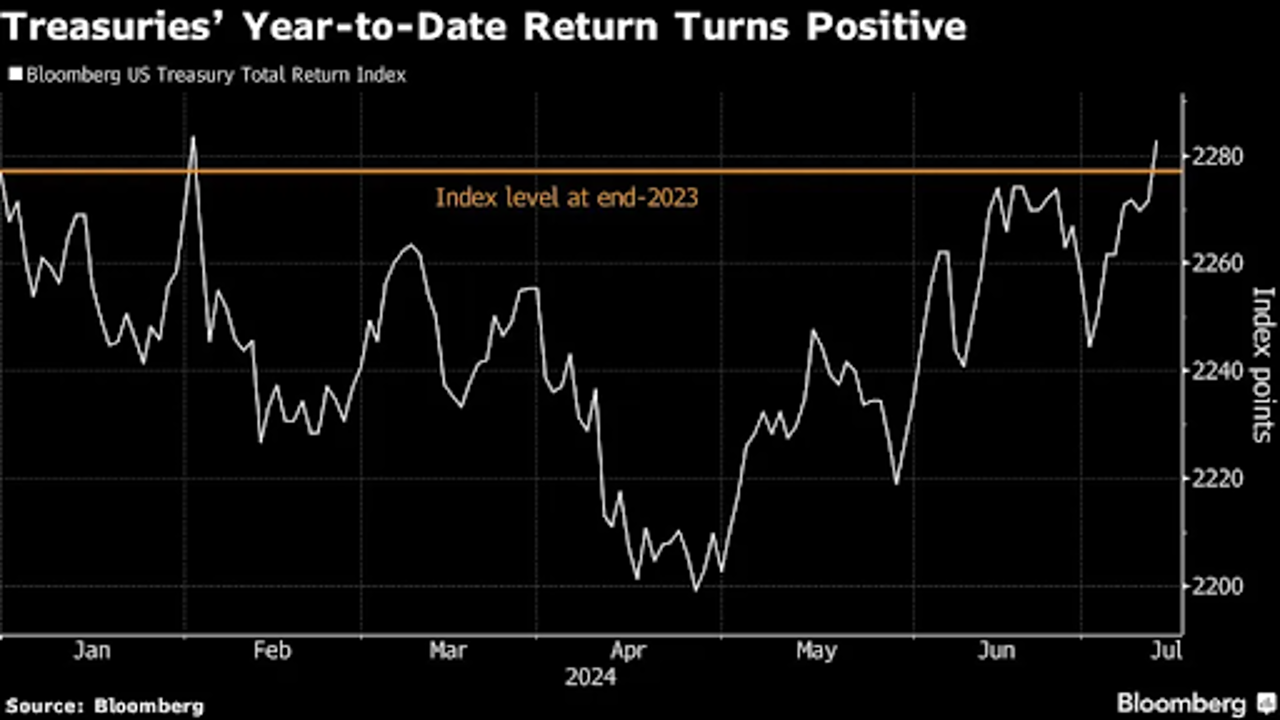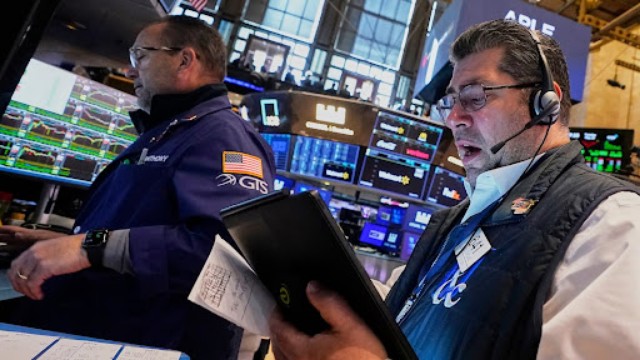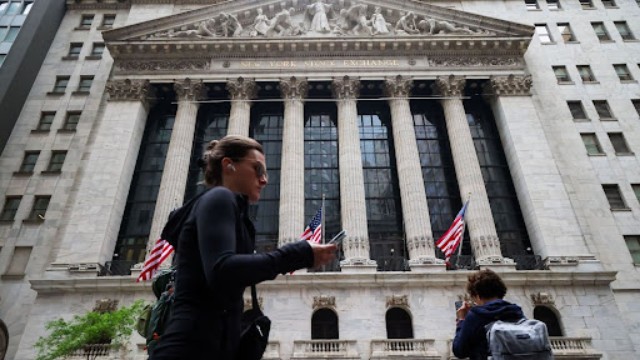
Bond Market Reaches Key Moment as Fed Rate Cuts Become Likely
The U.S. bond market is experiencing a significant shift as traders begin to anticipate three interest rate cuts this year. After struggling earlier in 2024, U.S. Treasuries have now erased their losses, showcasing a wave of optimism among investors.
This week, the bond market responded positively to easing inflation, leading to a drop in yields across the board. In particular, the two-year Treasury yield fell to 4.45%, its lowest level since March, indicating a strong market reaction to the latest consumer price index (CPI) data and a softer report from the labor market. Sinead Colton Grant, the chief investment officer at BNY Wealth, emphasized, “All signs point to the Fed starting rate cuts in September,” highlighting a growing consensus among market participants.
Federal Reserve Chair Jerome Powell has expressed caution about the labor market's health while awaiting more signs of inflation slowing down. Recent data showed that consumer prices rose at their slowest pace in three years, contributing to the ongoing rally in bonds. Although producer prices slightly exceeded expectations, traders remained focused on declining consumer sentiment, which helped push yields lower.
Thanks to this week’s rally, the Bloomberg U.S. Treasury Index has risen by 0.3% this year, recovering from a 3.4% loss recorded in April. “There’s a sense of FOMO (fear of missing out) in the market,” said John Madziyire, a senior portfolio manager at Vanguard, noting that many missed the peak yields earlier this year. With the Fed's potential actions in play, many investors are looking to extend their holdings to longer-term bonds.
Interest-rate swaps indicate that traders almost fully expect a quarter-point rate cut at the upcoming September meeting, with more than two cuts anticipated throughout the year. Barclays economists have revised their forecasts to predict a second rate cut in December, adding to the excitement around potential policy changes.
Some investors are even speculating on a half-point cut in September, with significant purchases of October federal funds futures contracts suggesting growing confidence in this possibility. As Edward Harrison of Bloomberg notes, “A drip drip of weak economic data” makes it hard for bearish investors to sway the market.
Looking ahead, traders are closely monitoring the Fed’s preferred measure of inflation—the personal consumption expenditures price index—and additional job market data. Molly McGown, a rate strategist at TD Securities, believes rates will likely continue to decline as the Fed moves toward easing.
However, the upcoming presidential election may complicate matters, according to Mohamed El-Erian, president of Queens' College. The potential return of Donald Trump to prominence, coupled with his proposed economic policies, could introduce inflationary pressures that might affect the Fed’s decisions.
The political climate has influenced the bond market dynamics, leading to stronger performance from short-term bonds compared to longer maturities—a trend known as a steepening yield curve. As expectations for rate cuts rise, short-term rates have dropped more significantly than those of longer-term bonds. Currently, the yield on 30-year bonds stands at 4.4%, about 29 basis points higher than that on five-year bonds, nearing levels not seen since February.
In summary, while investor sentiment is cautiously optimistic about upcoming rate cuts, the interplay between economic indicators and political developments will play a crucial role in shaping the future of the bond market.















